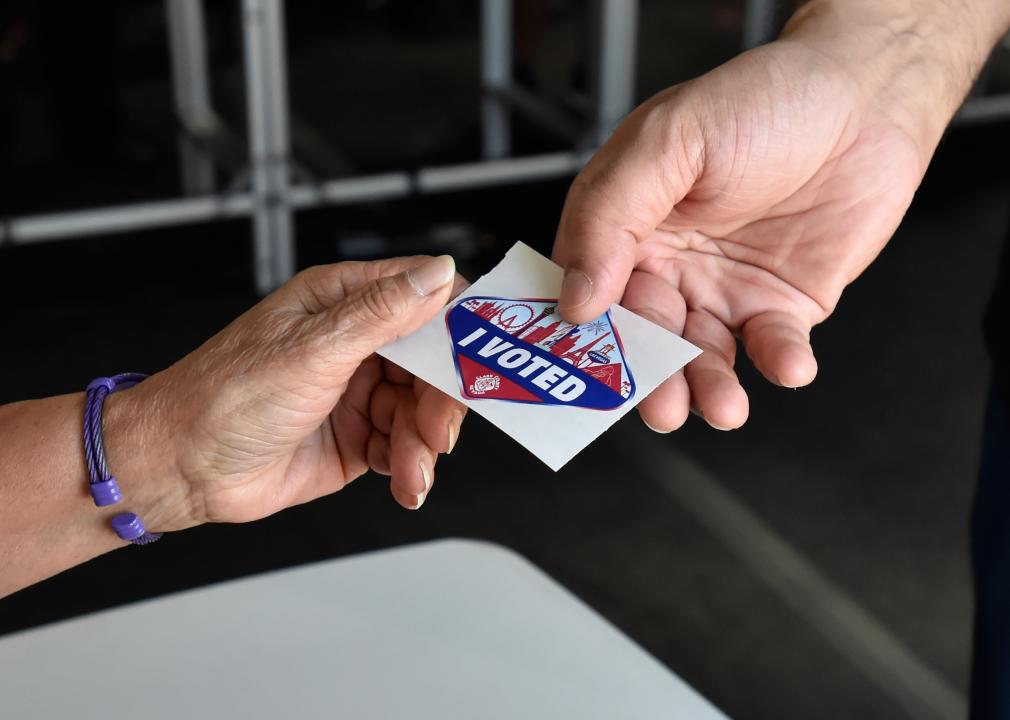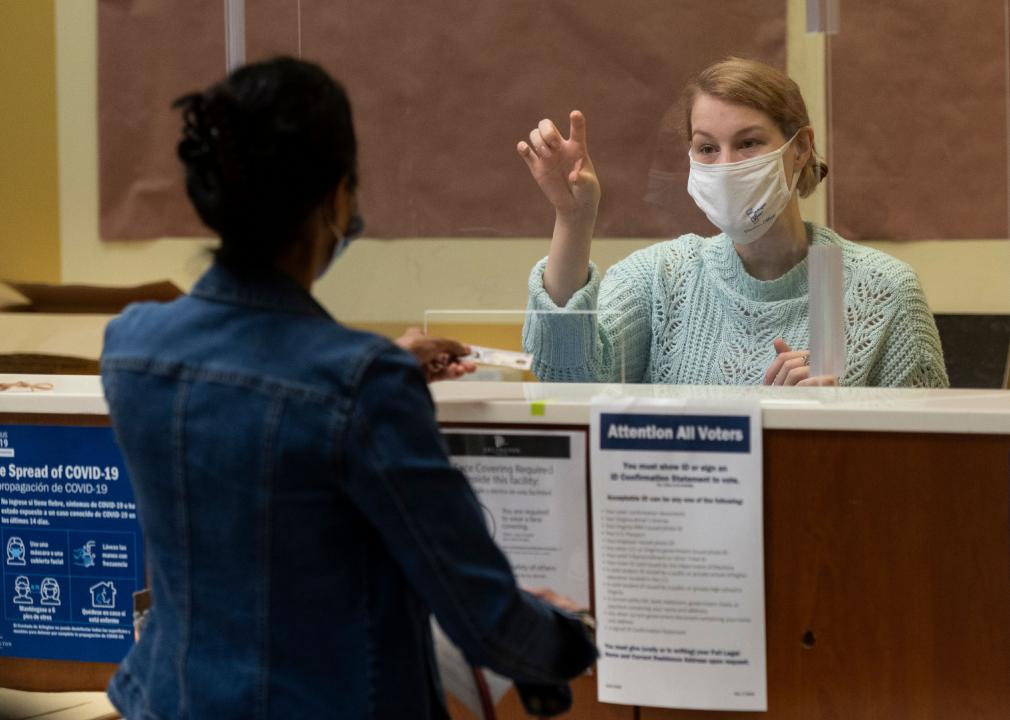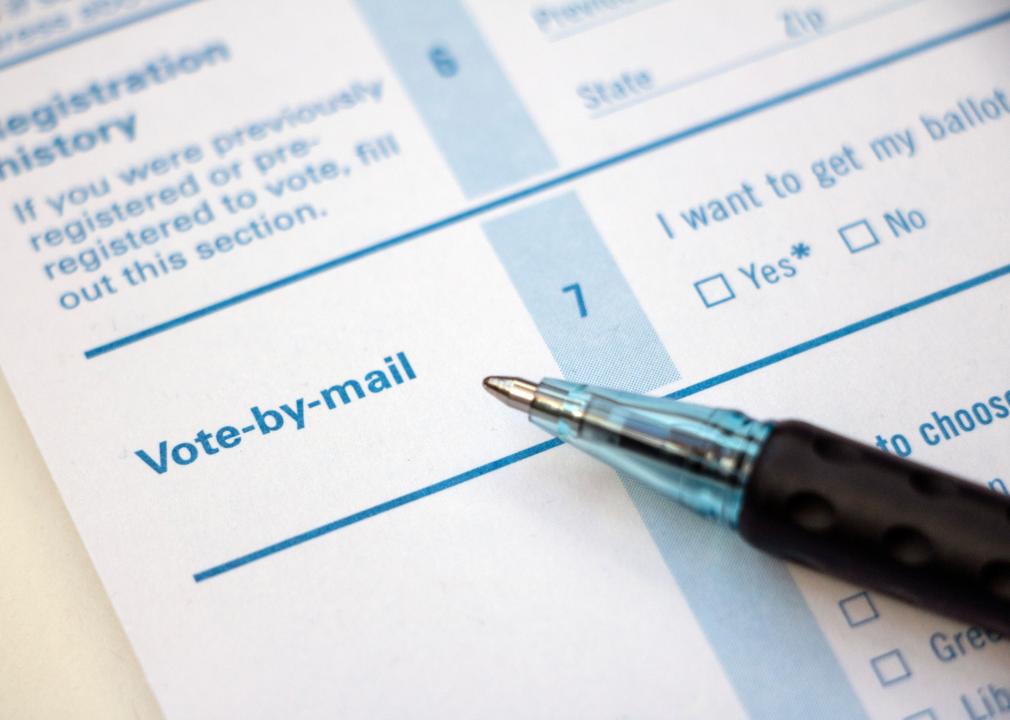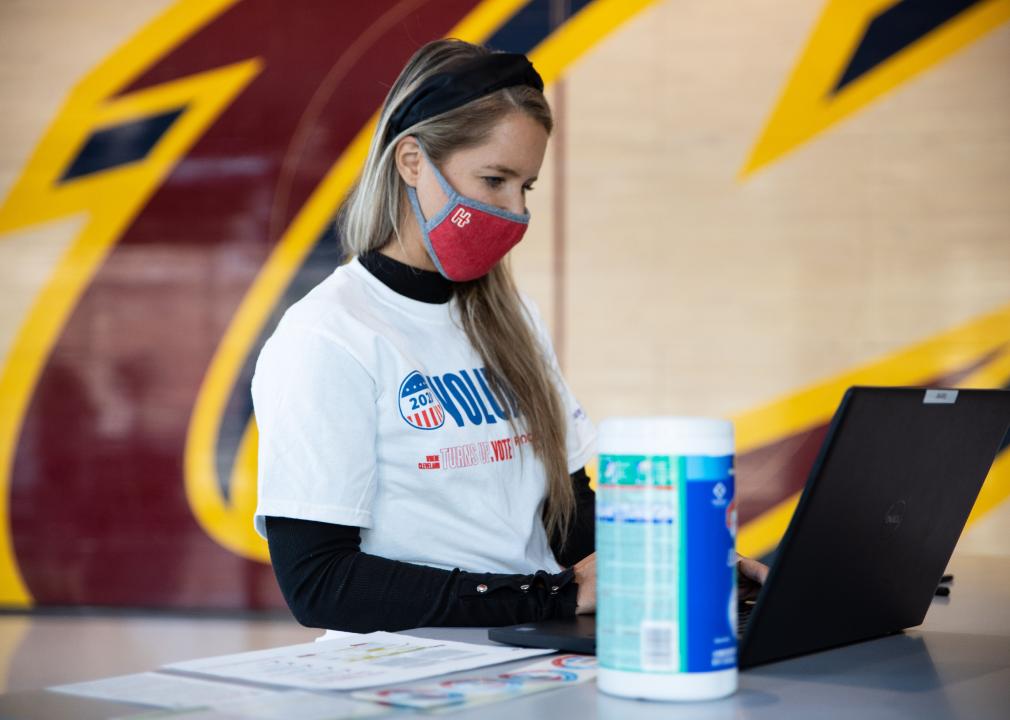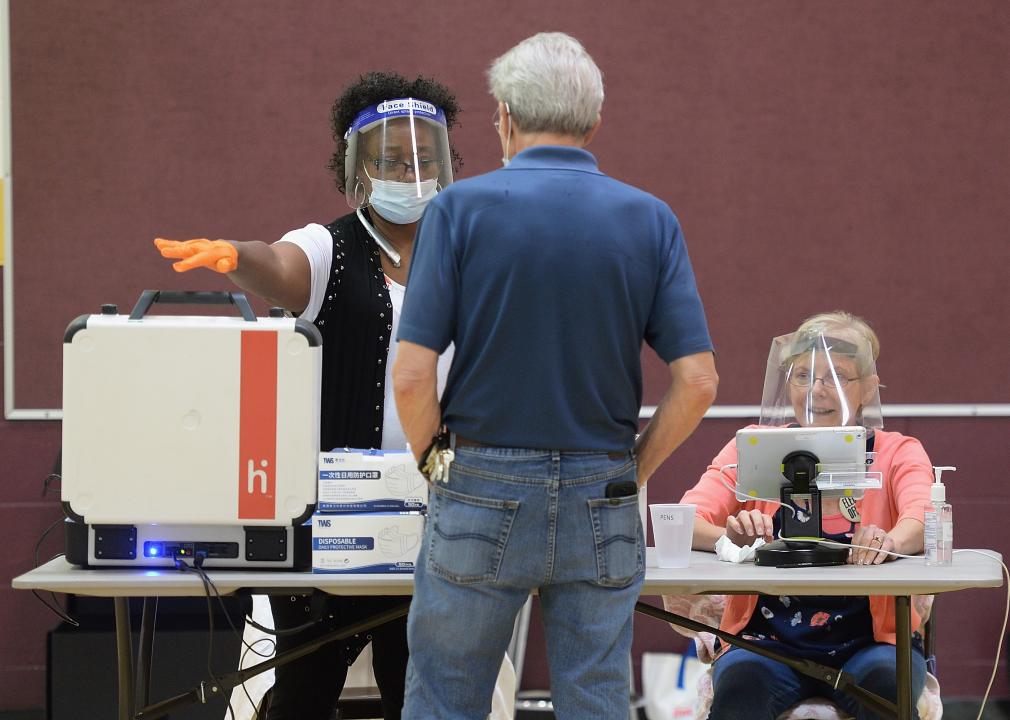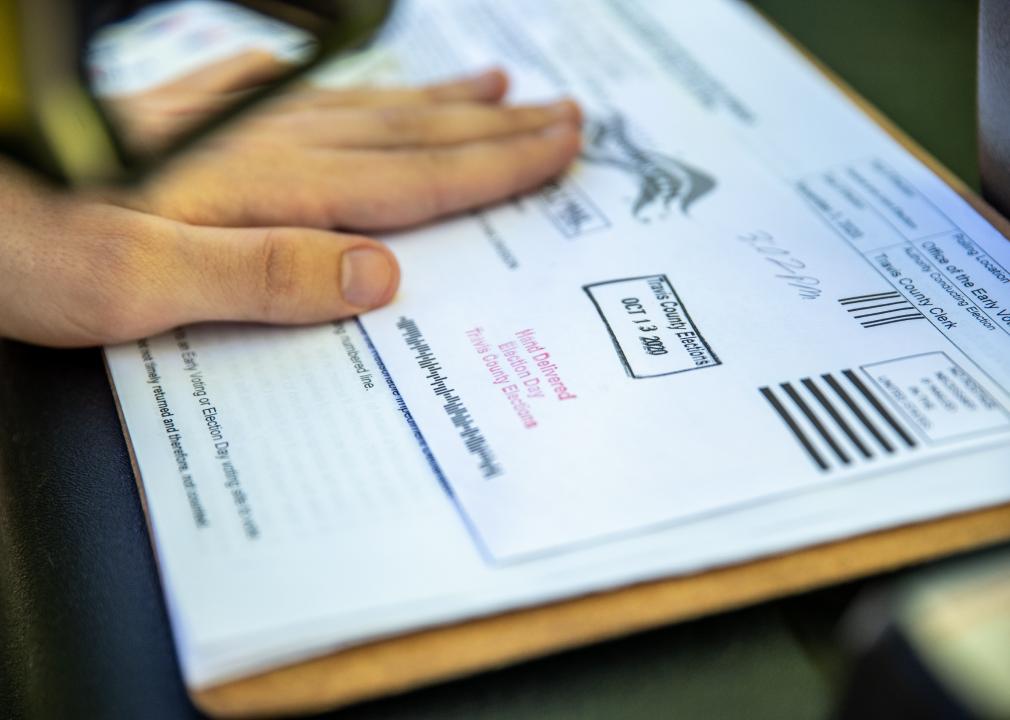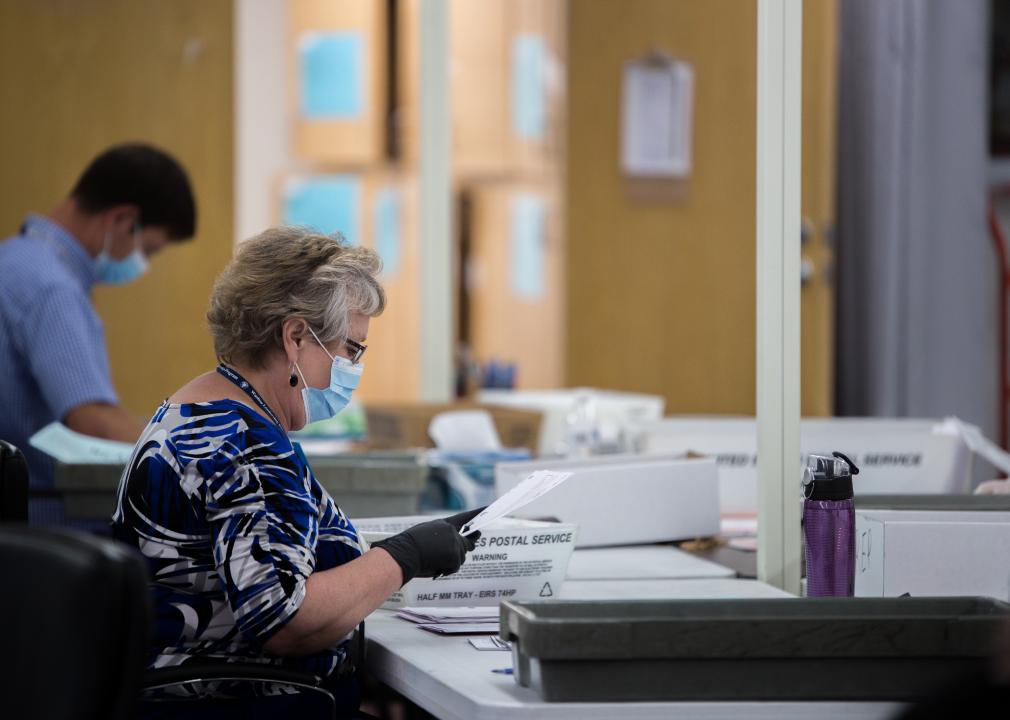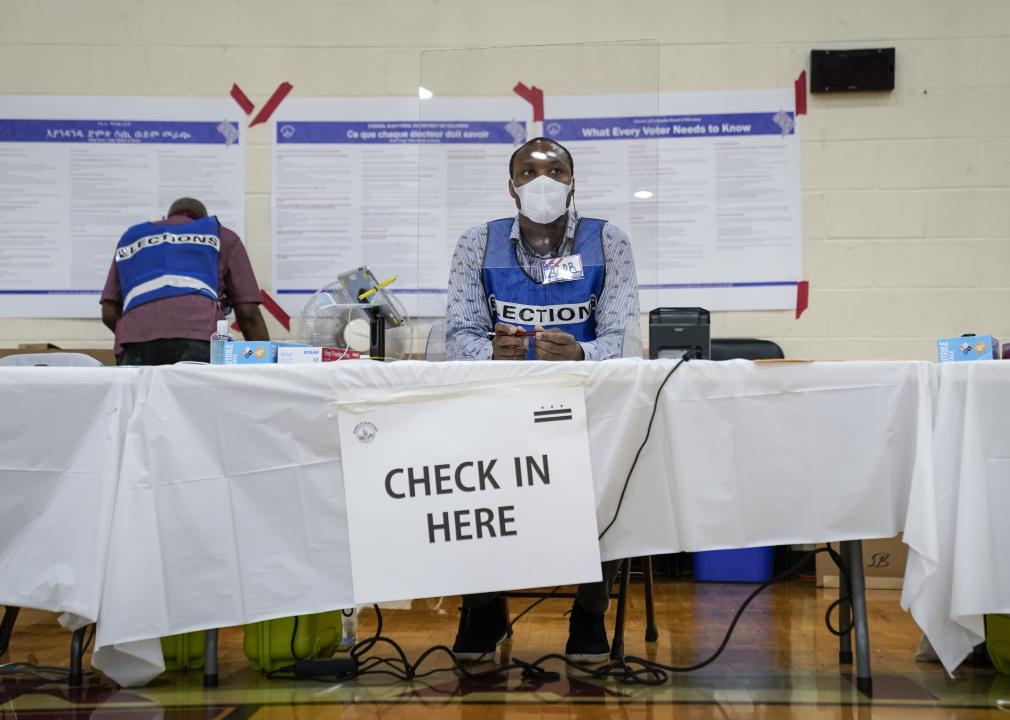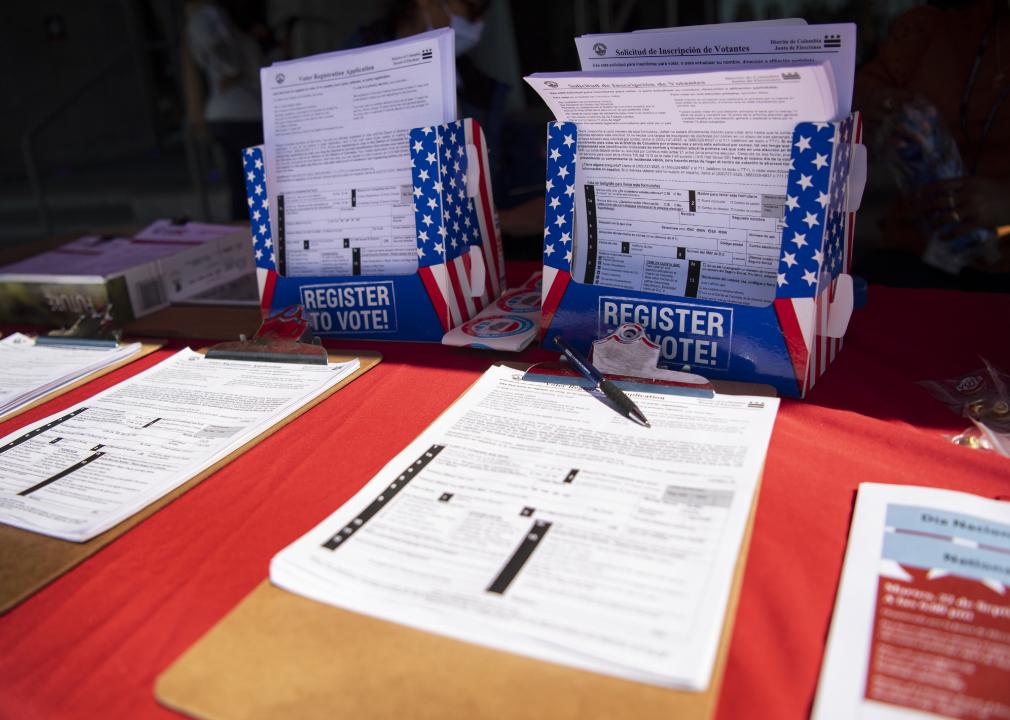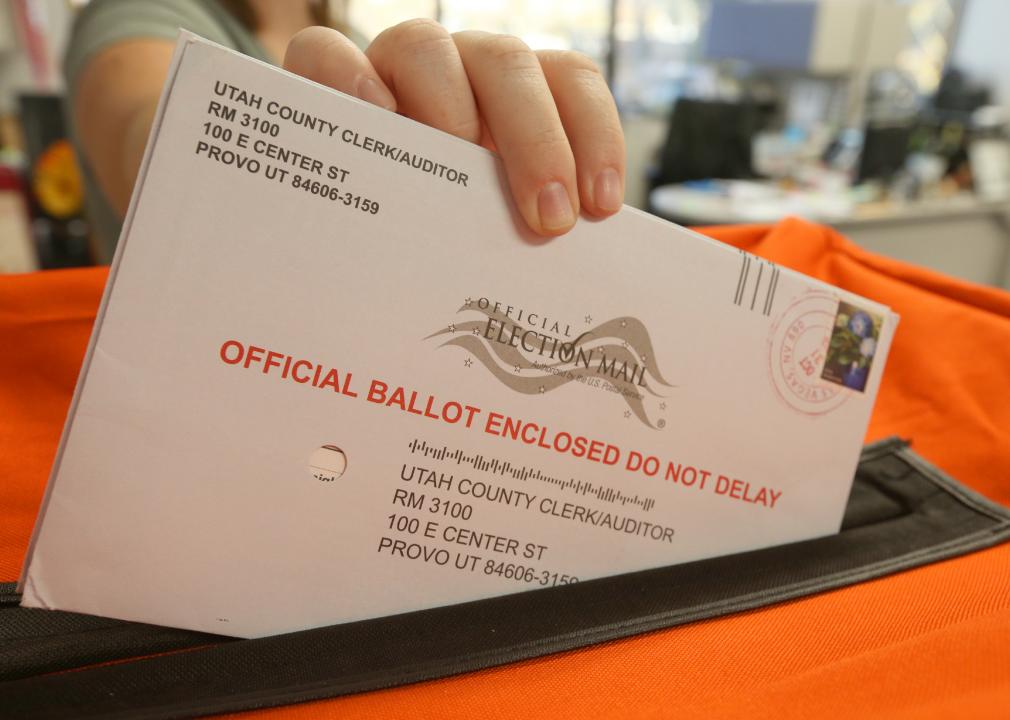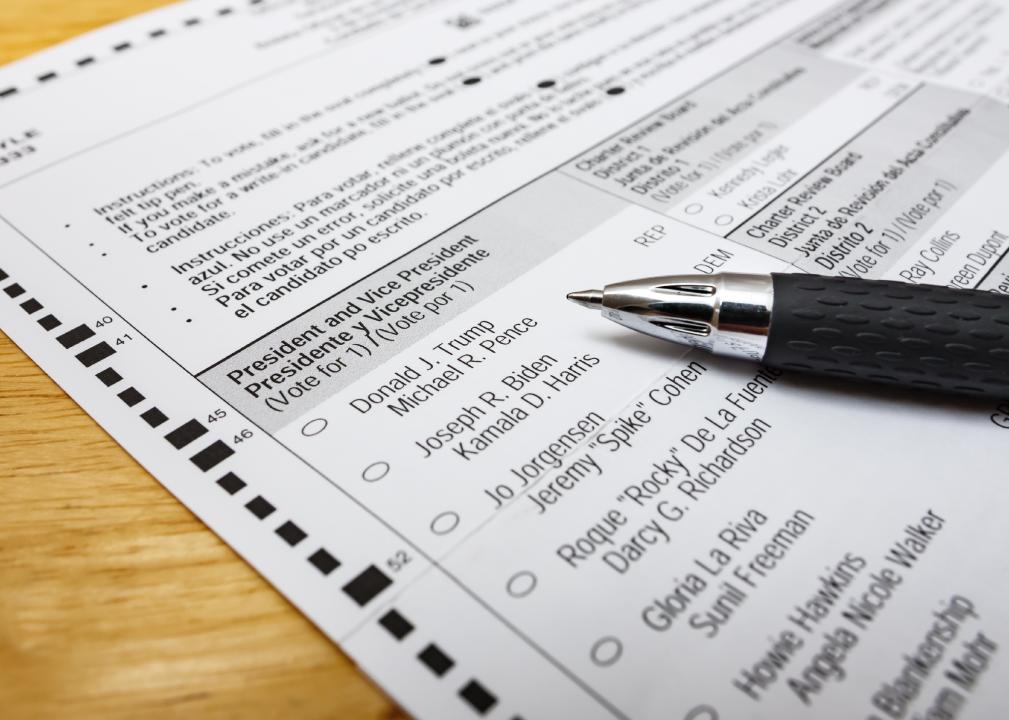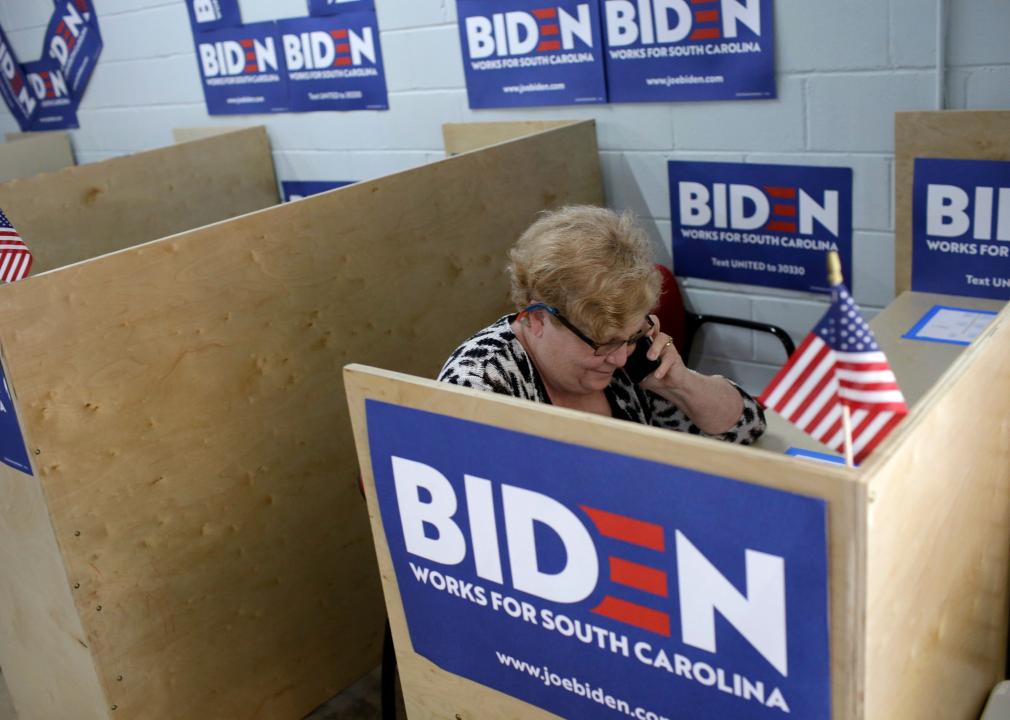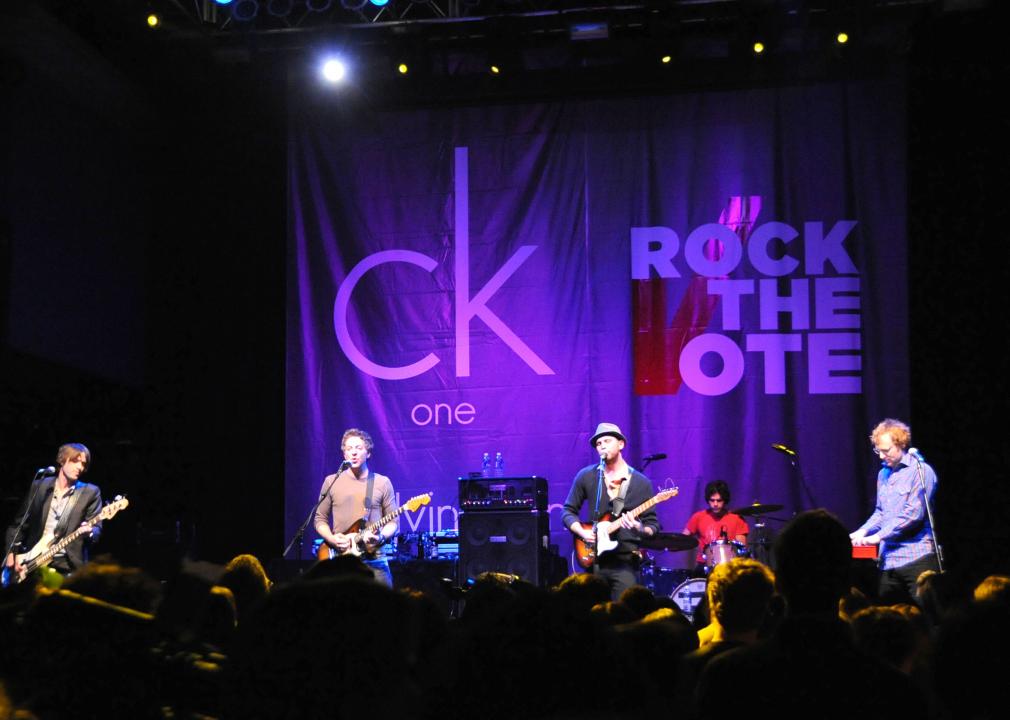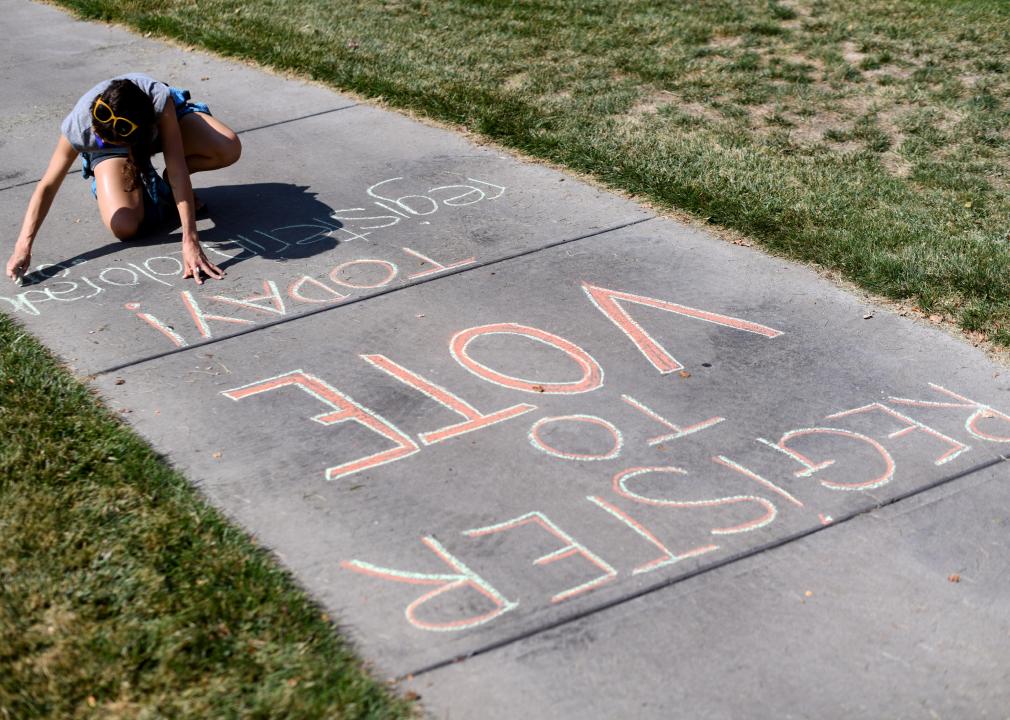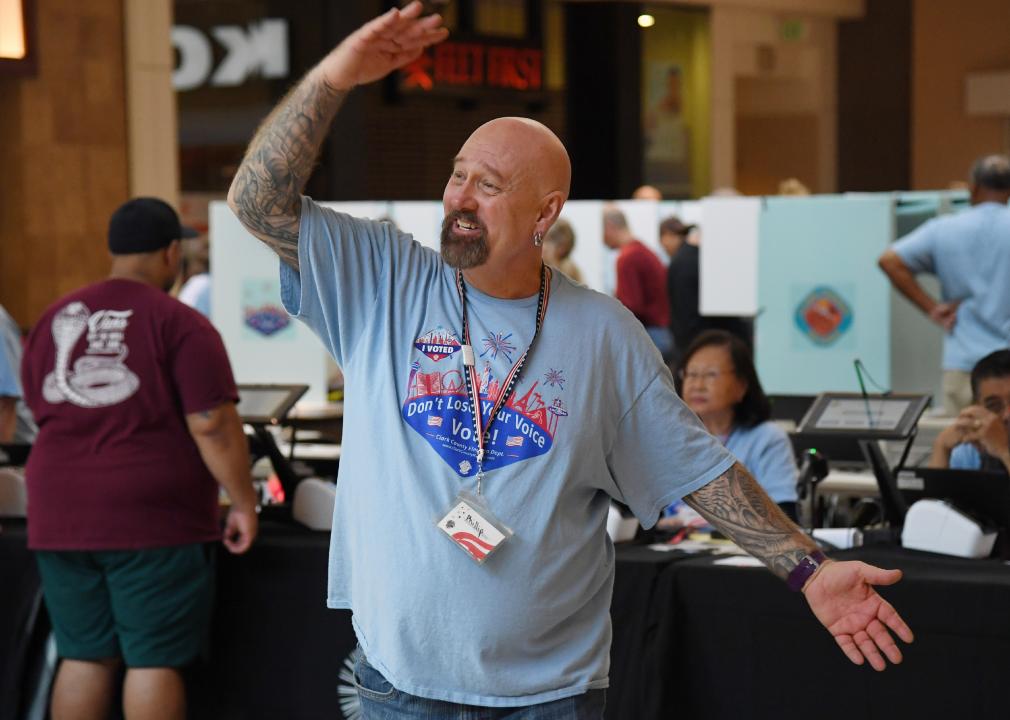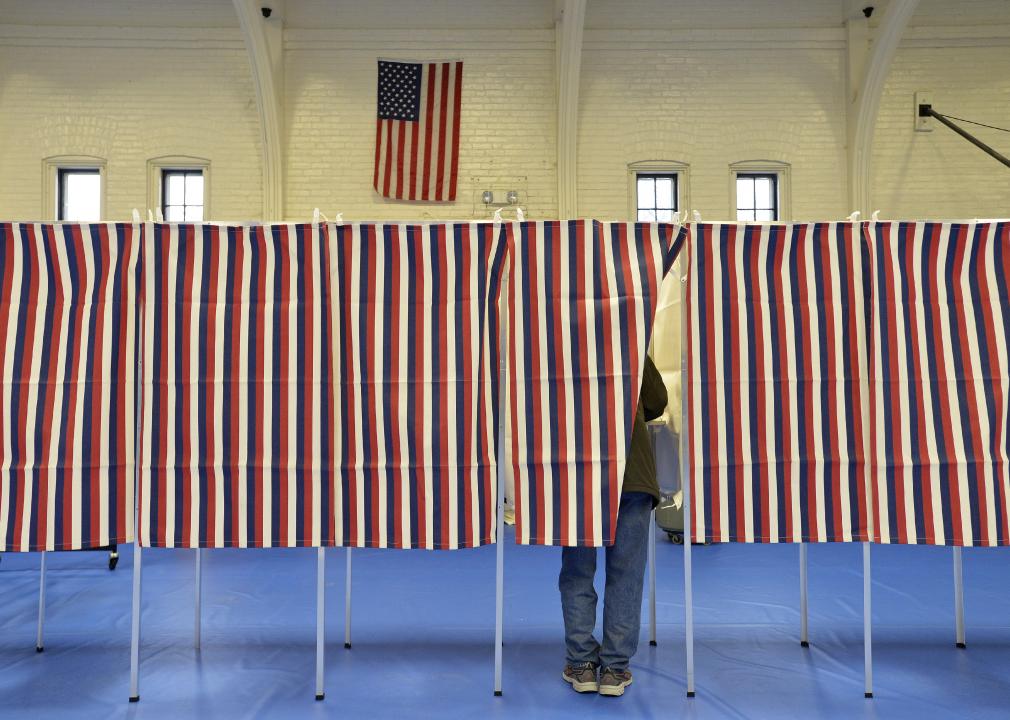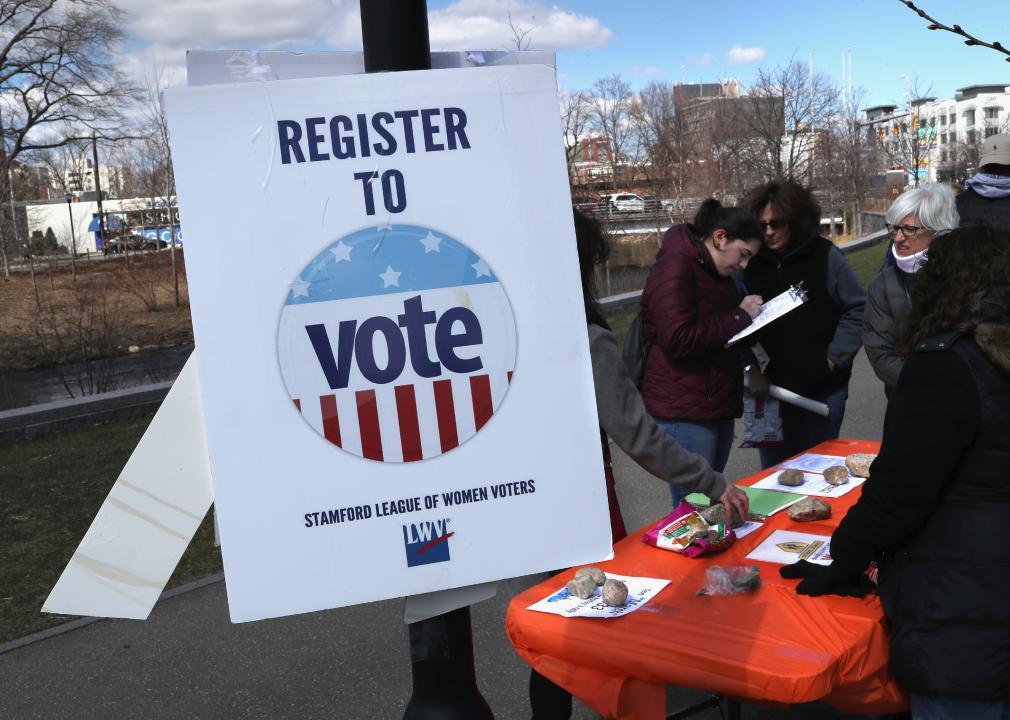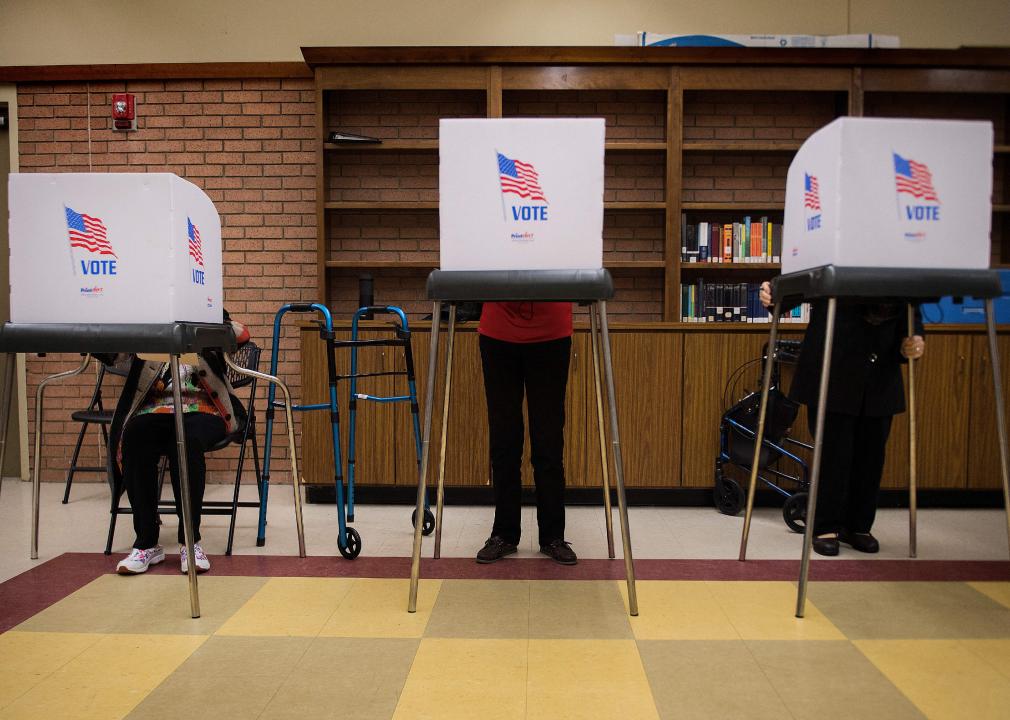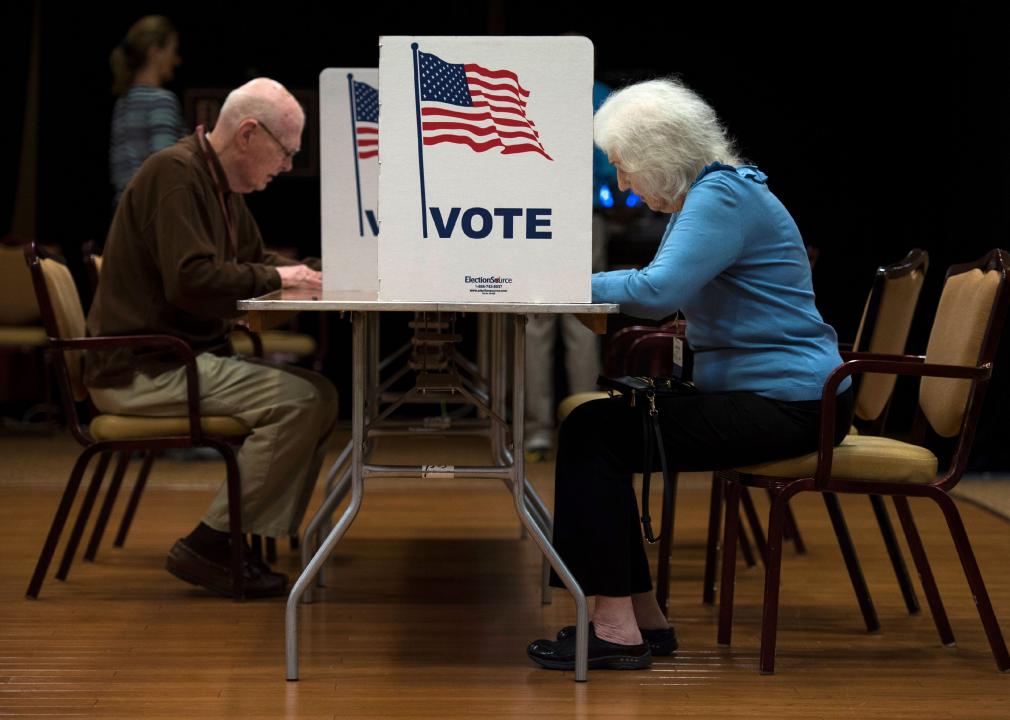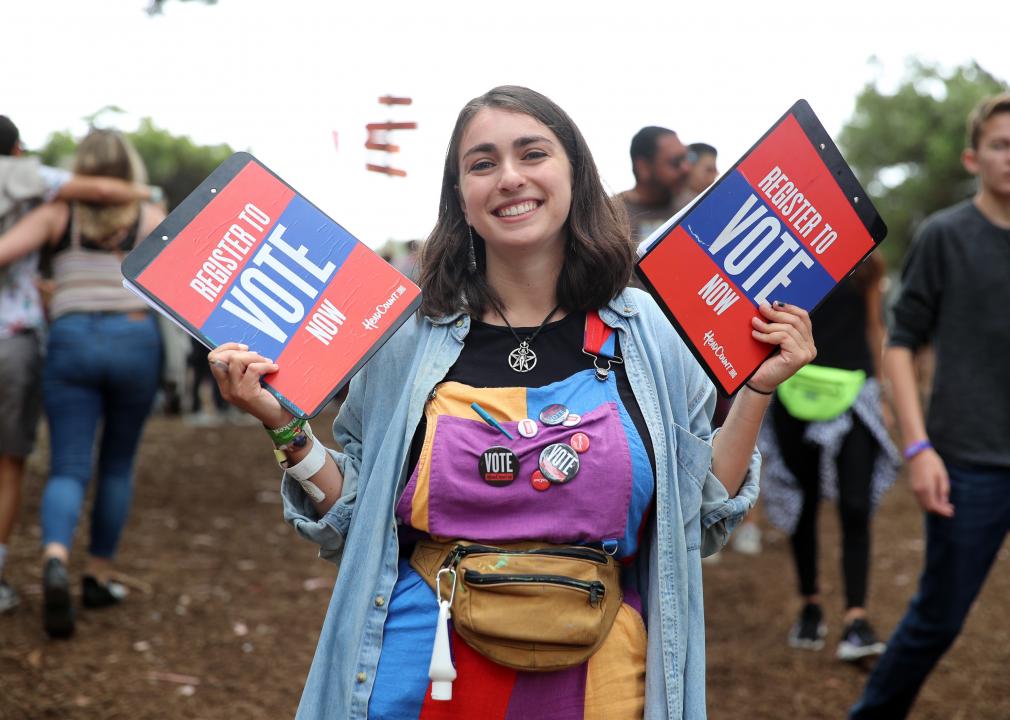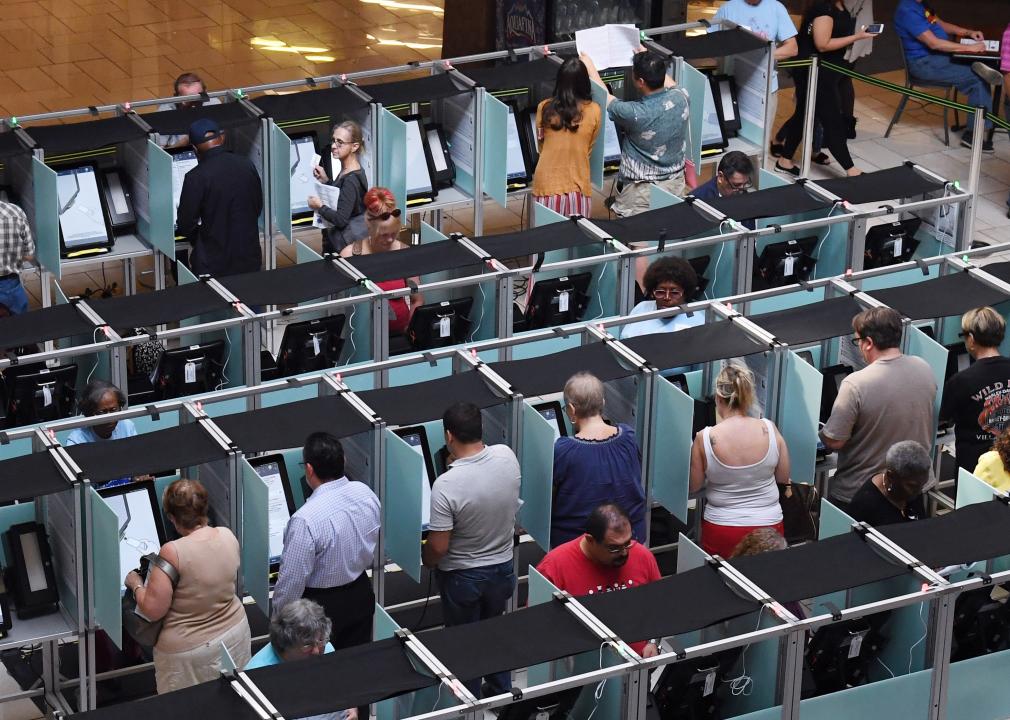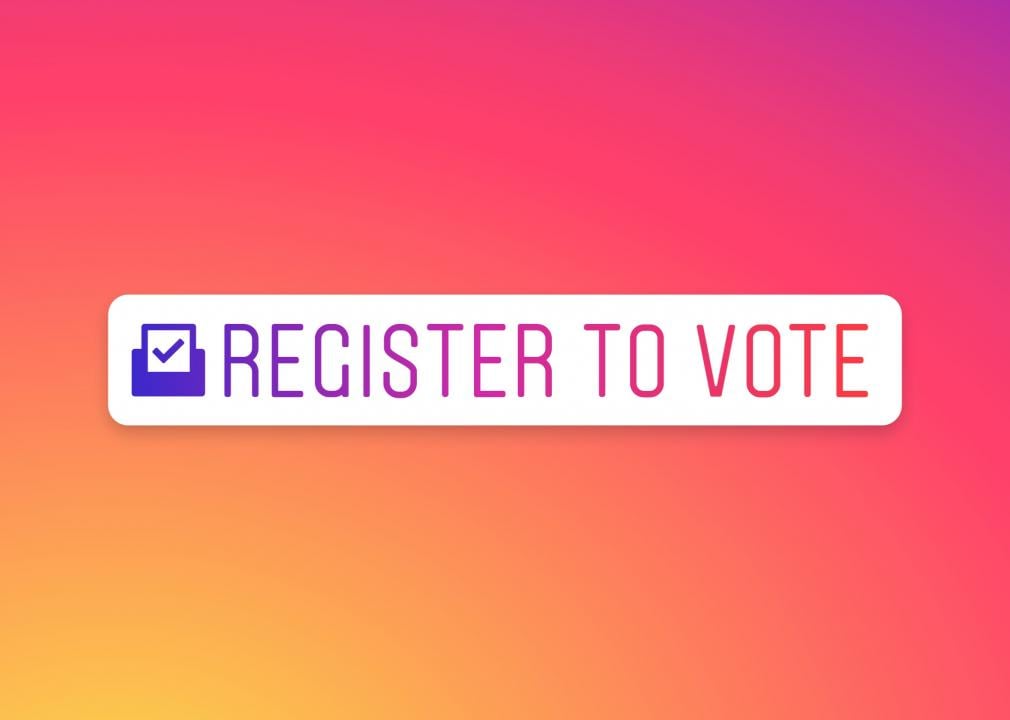How to become a poll worker—and other ways to encourage voting
David Becker // Getty Images
How to become a poll worker—and other ways to encourage voting
Voting in America is as old as the country itself. From the first election in 1788, in which George Washington was unanimously elected president, to President Joe Biden’s victory over former President Donald Trump in 2020, voting for our leaders is one of the few parts of the political process that hasn’t changed much—though in 2020 both the process and the results became highly polarized.
Voting is so important because it is one of the few ways regular people can make their voices heard and the only way a government is able to represent the best interests and needs of the people. That being said, who has the right to vote has changed quite a bit throughout our history: In early elections, only white male landowners over the age of 25 were allowed to cast ballots. Today—with the exception of people with felony convictions in some states—U.S. citizens of all genders, races, and income levels can vote.
In 2020, 158.4 million citizens—almost two-thirds of estimated eligible voters—voted in the presidential elections, according to the Pew Research Center. The number represented a higher than average turnout, with people voting in numbers not seen since 1980 and possibly well before then.
Still, many eligible voters didn’t vote in 2020. There are numerous reasons people don’t engage in the voting process. Voting can be inconvenient to fit in around work and childcare schedules—a problem cited even before the COVID-19 pandemic complicated matters. ID requirements, limits on mail-in and absentee voting, and polling place and drop-box reductions all make voting difficult. Coming out of the 2020 election, more than a dozen Republican-held states have imposed voting restrictions that critics say make it harder for poor people and people of color to vote—demographics that reliably support democrats.
In addition to getting people out to vote, our democracy depends on poll workers—members of local communities that help run polling locations, show voters how to use voting machines, and work to solve administrative snafus. There is currently a shortage of poll workers—a concern with midterm elections so close—prompting recruitment campaigns across the country.
Stacker compiled information from websites for government, civic organizations, voting rights, and voting information on how you can become a poll worker and various other resources to encourage and empower voting. We’re releasing this story as part of Democracy Day—a nationwide initiative aimed at highlighting the importance of our democracy and of protecting it.
You may also like: “I have a dream” and the rest of the greatest speeches of the 20th century
![]()
ANDREW CABALLERO-REYNOLDS // Getty Images
1. Know what’s expected of poll workers
An essential part of any election, poll workers fill a variety of roles on the actual day. Before signing up, be sure to know what may be expected of those filling these roles. For example, some poll workers may be registering or checking in voters, others may be distributing ballots, and still others may be acting as a resource for non-English speaking voters.
d.elmi // Shutterstock
2. Register with Power the Polls
If you feel confident in your ability to handle these tasks, then head over to the Power the Polls website. The organization’s goal is to eliminate the poll worker shortage by signing up thousands of new poll workers nationwide. After entering some basic information on the website, you’ll be notified if workers are still needed in your area and pointed in the right direction to apply for open roles.
MEGAN JELINGER // Getty Images
3. Check your registered voter status
While the requirements for poll workers vary by state, most require you to be a registered voter. If you’re unsure of your status, check on the National Association of Secretaries of State website, or click here.
Michael B. Thomas // Getty Images
4. Check the age requirements in your state
Although being a registered voter is a requirement for poll workers in most states, many also make allowances for individuals under 18 who wish to be involved in the democratic process. Some states require these young adults to hold a certain GPA or obtain a signed permission slip in order to participate. Enter your zip code on Power the Polls to discover the requirements in your city or county.
Sergio Flores // Getty Images
5. Check party residency requirements in your state
Nearly every state requires poll workers to be residents in the area where they’re applying to work. However, some states also require poll workers to have lived in the state for a certain length of time. Ensure you’re eligible by reading through the U.S. Election Assistance Commission’s compendium of election worker laws and statutes.
Trevor Bexon // Shutterstock
6. Check party affiliation requirements in your state
Being a poll worker is a nonpartisan activity, and your party affiliation will not affect your eligibility. That being said, some states use party affiliations to match poll workers to election locations in order to provide a fair and balanced voting experience. Check whether this practice is in place in your state at Fair Elections Center—and ensure you’re comfortable with it—before filling out your application.
You may also like: The best streaming services in 2021
Drew Angerer // Getty Images
7. Sign up to be a poll worker
After ensuring that you’re eligible and can commit to all that’s asked of poll workers in your area, head over to Work Elections to fill out an application. It’s as easy as selecting your state and county from a drop-down menu and entering some basic information.
Matthew Cavanaugh // Getty Images
8. Mark all important dates on your calendar
Most people know that Nov. 8 is the big day for midterm elections; however, many are unaware that poll workers are needed to cover shifts on other days as well. For example, most states offer early in-person voting, sometimes beginning as early as a month before election day. Poll workers are also needed for smaller state and local elections. Write down the full days or half days and times you’re assigned to work so that nothing gets missed in the shuffle.
Sean Rayford // Getty Images
9. Review the training materials
All states require poll workers to undergo some degree of training before election day. Some states do all of this training online, while others require participants to train in-person. Make sure you review all the materials given to you and ask any additional questions you may have before showing up for your first shift.
Al Seib // Getty Images
10. Know what to bring on election day
Certain things—like snacks, water, and portable cell phone chargers—have been “must-bring” items for poll workers on Election Day. Additionally, given that COVID-19 is still among us, some states or counties may still require, or at least encourage, the use of face masks. A quick Google search of your state and county should let you know what is required in your area.
Caroline Brehman // Getty Images
11. Make sure your friends and family are registered to vote
If you don’t feel comfortable volunteering to be a poll worker this year, there are plenty of other ways to help with the upcoming election. For example, you can check in with friends and family to ensure they’re registered to vote. State-by-state deadlines can be found on Vote.org.
You may also like: The best streaming services for sports in 2021
Scott Olson // Getty Images
12. Help loved ones establish a voting plan
After checking that friends and family are registered to vote, take things a step further and ensure they have a voting plan. Do they plan on voting in person or by mail? Early or on Election Day? Do they know where their polling place is located? Do they have time in their schedule to get to the polls and a way to get there?
George Frey // Getty Images
13. Review the facts about mail-in voting
Due to the coronavirus pandemic, many states allowed voting by mail, or absentee voting without reason, in 2020. With midterm elections, some of those rules may remain, while others are being challenged or may have changed. Check to see how your state approaches mail-in voting on Vote.org, then head over to the U.S. Vote Foundation to find mail-in deadlines by state.
Mario Tama // Getty Images
14. Get ready for the upcoming midterm elections
The 2022 United States House of Representatives elections will be held on Nov. 8, 2022. All of the House’s representatives will be chosen on this date. Additionally, 34 Senate seats will be determined on Nov. 8, 2022. Nonpartisan platforms, such as Ballotpedia, give a nation-wide overview of where congressional elections are being held in 2022.
KAMIL KRZACZYNSKI // Getty Images
15. Don’t forget about state and local elections
In addition to Congress and Senate seats up for grabs, a number of governors, state executives, and state legislators will be on the ballot. Head to Ballotpedia’s 2022 elections page to find out if your state will be holding an election for one or more of these positions. And don’t forget about local elections —which are easy to miss because they don’t receive the same publicity or attention as larger elections.
The Toidi // Shutterstock
16. Check to see what will be on your ballot
Other offices, propositions, and issues will be on 2022 ballots. Check Vote411 to find out exactly what you’ll be voting on so that you can make educated decisions and encourage others to make educated decisions as well.
You may also like: The best streaming services for football in 2021
JOSHUA LOTT // Getty Images
17. Volunteer to work the phones
In 2020, phone banking, or cold-calling potential voters to inform them of your favored candidate, became a popular campaign tactic. Reach out to a local campaign office and offer to volunteer your time as a phone banker. You’ll receive a script to read, a list of phone numbers to call, and you’re off and running—bringing awareness of your preferred politicians and their platforms.
Jacob L. // Shutterstock
18. Volunteer to text bank
For those who go cold at the idea of a phone call with a stranger, text banking can be a preferred alternative. The idea is the same: You’ll be making a pitch for local or national candidates only via text messages rather than over the phone. Reach out to the office of any candidate for a list of numbers to get started.
Kate Aedon // Shutterstock
19. Write letters encouraging people to vote
Writing letters to unregistered voters or those who are unlikely to vote is another proven way to increase voter turnout. Vote Forward, a grassroots, nonpartisan organization is still looking for volunteers to help it reach 10 million letters sent by mid-October.
Scott Olson // Getty Images
20. Offer to drive folks to the polls
One commonly cited obstacle that keeps many voters from reaching the polls is a lack of affordable or accessible transportation. If you have a car and a few hours to spare, consider volunteering as an Election Day driver. Check with folks in your circle who may need a little extra help first, then volunteer with an organization like Carpool Vote.
BAZA Production // Shutterstock
21. Provide election day child care for loved ones
Another major obstacle for would-be voters is child care. If you have the flexibility, offering free child care for those in your circle or community can be an incredible way to impact voter turnout.
Drew Angerer // Getty Images
22. Offer your skills to a local campaign office
A very hands-on way to impact voting and elections, on both local and national levels, is by offering your skills to a campaign free of charge. Whether you’re good at speech writing, organization, outreach, or event coordination, there is almost certainly a politician that needs and would appreciate the help. Reach out to campaign offices in your area to see what gaps they need filled.
Ivan Kruk // Shutterstock
23. Make a donation to a voting organization
If you aren’t comfortable with in-person volunteering this year, consider making a monetary donation. You can give money to organizations that encourage voting, aim to end voter suppression, or work to help individuals restore their right to vote.
Patrick McMullan // Getty Images
24. Volunteer with Rock the Vote
Rock the Vote is an organization founded by music executives that aims to politically empower young people and encourage them to vote. There are a number of volunteer opportunities available within the organization, including participating in its Relational Organizing initiative. Submit your information on the Rock the Vote website and get matched with a volunteer opportunity that fits your skills and availability.
Hyoung Chang/MediaNews Group/The Denver Post // Getty Images
25. Pledge to register to vote
If you’re under 18 and not eligible to cast a ballot in the next election, you can still make your voice heard by pledging to register on Vote.org. Teenagers 13 and older can enter their information on the website, and Vote.org will reach out on their 18th birthday to walk them through the registration process.
Ethan Miller // Getty Images
26. Sign up to monitor the polls with Election Protection
Poll monitors are individuals who show up to the polling stations on Election Day to ensure everyone is able to cast a ballot safely, securely, and fairly. These individuals act without the backing of a particular political party or government organization in order to ensure all voters are able to exercise the right granted to them by the constitution. Election Protection, a nonpartisan coalition, accepts in-person and social media monitoring volunteers.
jmrainbow // Getty Images
27. Write letters on behalf of Fair Vote
Fair Vote is a nonpartisan organization that seeks to give voters a stronger voice and a more representative government by transforming how elections are run. The group hopes to pass the Ranked Choice Voting Act and is gathering support for the cause by hosting a letter to the editor campaign. You can write your own letter by following its handy guide, inspiring other Americans to have a more active role in politics along the way.
JOSEPH PREZIOSO // Getty Images
28. Share a first-time voter checklist on social media
For many, the 2022 election will be their first time casting a vote. Help assuage any fears these folks may have and demonstrate how easy the process really is by posting the Vote 411 “First Time Voter Checklist” to your social media platforms.
John Moore // Getty Images
29. Join your local branch of League of Women Voters
Founded six months before the 19th Amendment—which gave women the right to vote—was ratified, the League of Women Voters has shifted its focus to ensuring that all Americans can and do register to vote. Folks of all genders are now able to join their local branch, impacting voting on national and local levels. The League of Women Voters is also accepting charitable donations of all sizes.
JIM WATSON // Getty Images
30. Give your employees paid time off to vote
If you’re a business owner or manager, consider giving your employees paid time off to cast their ballots. Whether it’s the whole day or a couple of extra hours at the start or end of their shift, giving voters dedicated time to hit the polls is an easy way to eliminate the “I had no time to vote” excuse.
ANDREW CABALLERO-REYNOLDS // Getty Images
31. Support Ballotpedia and Vote Smart
With the rise of social media and fake news, it’s harder than ever to determine what’s true and what’s not. This is why nonpartisan organizations like Ballotpedia and Vote Smart, which dedicate themselves to presenting the bare facts of politics and politicians without spin, are more important than ever before. Consider making a donation to either organization, and help fellow Americans know exactly what and who they’re voting for this election.
FilmMagic // Getty Images
32. Volunteer with HeadCount
HeadCount is a nonpartisan organization that stages voter registration drives at concerts and music festivals around the country. Sign up to work with the organization and be a part of this grassroots effort encouraging political participation and activism.
Ethan Miller // Getty Images
33. Download the Greenhouse browser extension
Many people abstain from voting because they feel that the entire system is rigged, with major corporations “buying” candidates in an effort to push their own agendas. The Greenhouse browser extension helps to combat this distrust by breaking down the campaign contribution data for every senator and representative, empowering individuals to pick candidates they truly feel have their best interests at heart. This election season, recommend this tool to anyone you know who may keep from voting over fears of shady campaign financing.
Olena Yakobchuk // Shutterstock
34. Offer discounts to voters on election day
It’s been proven time and again: People love a good discount. Business owners, both large and small, can do their part to encourage voting—especially in state and local elections—by offering discounts to individuals who can provide proof that they voted. After all, who knows, maybe that dollar off a coffee will be just the nudge some people need to cast their ballots.
The Washington Post // Getty Images
35. Plan a virtual town hall
Local offices have an incredible impact on our day-to-day lives. Far too often, communities don’t get a chance to hear from the politicians vying for these roles and walk into the election blindly or refuse to vote on these offices at all. One way to combat this problem is by working with local community groups to organize virtual town hall meetings where candidates can express their platforms and answer voter questions.
fizkes // Shutterstock
36. Continue to have open conversations
Perhaps the biggest way to drive more voters to the polls this year is by continuing to have open conversations with those in your circle. Be loud about the fact that you plan on voting, and continue to encourage those around you to vote as well. Have frank, but kind chats about who you’re voting for and why, and there’s a good chance you’ll encourage your circle to join you.
ART PAL // Shutterstock
37. Get the word out on social media
Social media is one of the most powerful tools at your disposal, so use it to bring as much attention as possible to this year’s election. Try “register to vote” stickers on Instagram, “reminder to vote” frames on Facebook, and whatever other buttons and filters you can find to encourage your followers to head to the polls.
